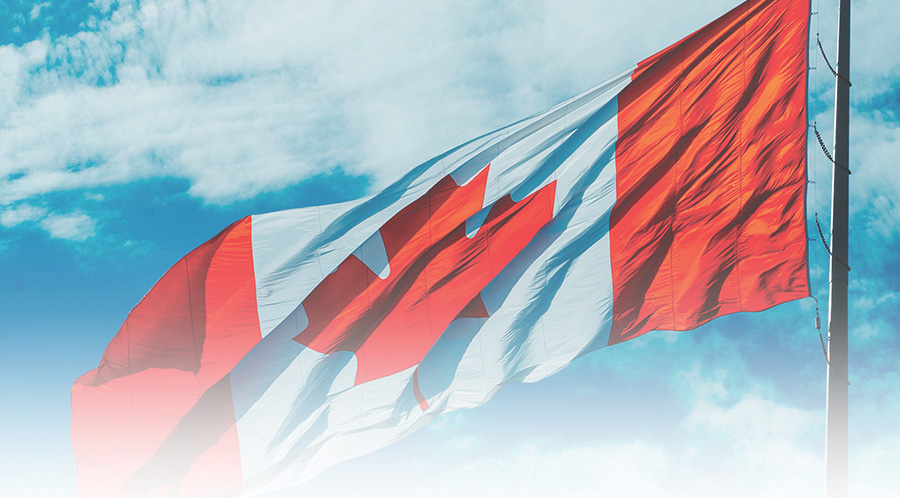
50 years of National Museum Policy
Peter Simpson
A new National Museum Policy must be about more than just money, says Canadian Museums Association executive director and CEO Massimo Bergamini. It must also fundamentally re-envision the roles that museums play in Canadian life, and free up museums to play those roles even better.
“The country is divided, in many ways,” Bergamini says. “These fault lines are economic, these are cultural, they’re political. We witness it in our political discourse, we witness it in the level of frustration that bubbles over and turns into an illegal occupation of the parliamentary precinct. All of these things are signs that the body politic is suffering. Museums provide an opportunity for calm discussion, for, frankly, healing. Museums are places where people can come together, they can learn about our history, they can learn about context, they can debate and discuss.”
This spirit is key to the CMA’s campaign for a new National Museum Policy, the need for which has been exacerbated by the social and economic realities of the COVID-19 pandemic and necessary public-health measures.
“The stress and trauma of the last two years has... brought into sharp relief historical inequities and grievances, and exacerbated divisions within our civil society,” reported board member Heather George in a CMA presentation to the Standing Committee on Canadian Heritage in February. “If museums are to play their unique role in healing our society and in helping Canadians imagine a better future together, this must be acknowledged by governments — starting with the Government of Canada.”
Funding remains an important part of the CMA’s call, as federal financial support has been in a long decline. Fifty years ago, the museum assistance policy included federal funding to museums of $15 million per year, or approximately $60 million in today’s money, but funding today is closer to $10 million. The CMA is calling for more emergency support, and an increase in funding to museums to at least $60 million annually.
“Museums provide a value of $1.2 billion a year in educational benefits, and $277 million in value of online visits,” George told the Heritage Committee. The numbers, from a study by Oxford Economics, found that economic benefits of museums in Canada total $2.9 billion per year. “They provide good jobs and opportunities for Canadians to give back to their communities through volunteering,” George said. “The economic value to the country is clear.”
One champion of museums on Parliament Hill is Senator Patricia Bovey, the former director of the Winnipeg Art Gallery and the Art Gallery of Greater Victoria, and the first museologist elevated to the Senate, who continues to promote Bill S-208 on “the essential role of artists and creative expression in Canada.” Bovey agrees that more and smarter funding for museums is essential, while stressing that “an Oliver Twist perspective — more, please, more please, more please — is not necessarily the way to go. We have to prove, as museums, what our benefits are to society.”
Many studies and museum projects have proven those benefits are widespread, from reduced recidivism to better health outcomes, the latter a key point for a federal government that is targeting spending towards programs that could mitigate the inexorable growth in health spending. Museums must demonstrate that they can help government, and politicians, to meet their public-service goals, and demand the access and working relationships that can make such co-operation possible and effective.
“I would like us to ask for partnerships,” Bovey says. “The depth of knowledge of the people who work in our museums can have a much greater impact if the doors (are) opened to us, and I want that museum policy to open those doors.”
The CMA continues to lobby the federal government to prioritize the renewal of the National Museum Policy, to provide additional pandemic relief and increase long-term funding to museums, and “ultimately recognize the tremendous benefits to the economy and society” that museums pay out in return for the investment of public funds.
Bergamini says meeting those goals requires museums to have “a set of tools” that are “adapted to their reality.” Funding should be less transactional and less competitive, and more stable in the longer term.
“When you’re concerned about that leaky roof damaging your collections, you can’t really explore the kind of progressive role that you can play in healing this country, in bringing this country together,” he says.
Stable funding would free up museums to be more responsive and flexible in their programming, with the freedom to take risks and learn valuable lessons from what works and what fails. Eliminating the protracted process of having to first secure funding would allow museums to pivot and mount exhibitions and programs more quickly, especially in times of urgency.
“The challenge is really about the Government of Canada enshrining in policy a vision of the country, recognizing the fault lines that characterize our country today, and saying we will work with these institutions because we believe these institutions have a role to play in addressing these fault lines. This is not a short-term process, it’s a generational process,” Bergamini says.
The CMA’s proposals include: maximizing collections to tell inclusive Canadian stories from multiple perspectives; promoting more digitization of collections and digital exhibitions; promoting a sustainable and inclusive future and social cohesion through work on climate change, reconciliation, and other vital issues; allowing museums to encourage public participation and innovation; and positioning the museum sector to more effectively help government and society meet public and social goals.
Museums are uniquely trusted to play such a role, Bergamini says. “Museums remain among the most trusted institutions in the country across all demographics.”
Many reports have affirmed this public trust, including a 2016 study by the Heritage Department, which showed that 96 per cent of Canadians believed museums were “trusted sources of information about history.” The numbers were lower among Indigenous people, but still showed more trust in museums than in all other sources of information.
“Museums are places where people can come together, they can learn about our history, they can learn about context, they can debate and discuss,” Bergamini says. “You’ve got to get the people’s minds and the people’s hearts, and I think that our institutions are in that business of hearts and minds.”
The current federal government has committed to a new National Museum Policy in principle, both in the 2019 mandate letter of the Minister of Canadian Heritage, and in subsequent statements from the Minister and Prime Minister Justin Trudeau. Though the introduction of a new national policy has, like so much else, been delayed by the pandemic, the need is urgent. “We believe an updated policy is vital to pandemic recovery and to establishing greater long-term resilience for the sector,” the CMA wrote to the government in 2021.
In May, the CMA will begin a series of roundtables across the country to reach a common set of principles for a new National Museum Policy, including practical perspectives on the states of operating and capital funding, programming, and of labour and personnel. M
Peter Simpson has written about arts and culture for many years from his art-filled home in downtown Ottawa
